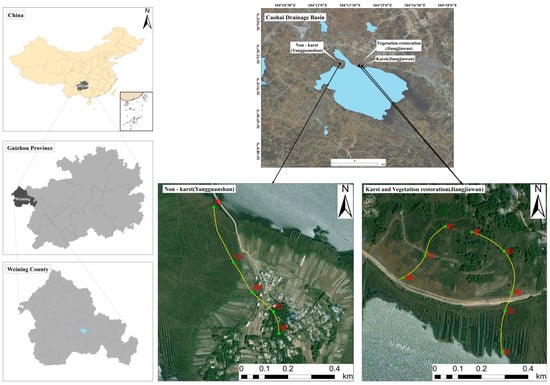Land Degradation Evaluation, Alleviation, and Restoration in Watersheds
A topical collection in Sustainability (ISSN 2071-1050). This collection belongs to the section "Soil Conservation and Sustainability".
Viewed by 1767Editor
Interests: soil physics; soil erosion; sediment transport; land degradation; watershed environmental assessment;
Special Issues, Collections and Topics in MDPI journals
Topical Collection Information
Dear Colleagues,
Land degradation is one of the major types of environmental degradation all over the world. During the processes of land degradation, soil erosion leads to the decline of organic matter and nutrients in the soil system, salinization, compaction, biodiversity loss, and eventually land desertification. Subjected to the changes in climate and land use/land cover, processes of land degradation in watersheds also have an impact on the ecosystem services in the provisioning, supporting, and regulating aspects. In this Special Issue, we focus on the phenomena and managing measures of land degradation at the regional scale. Studies submitted to the Special Issue should fit into the scope of investigation, evaluation, alleviation, and restoration of ecosystem services and land degradation in watersheds. The purposes are illustrating the intercorrelations and proposing the historical, current, and/or future conditions of land degradation and ecosystem service variation, under scenarios of different land use/land cover and climate change, as the knowledge base for pursuing sustainable land management, combating desertification, and halting and reversing land degradation. Original research and technical notes that include but are not limited to the following topics are welcome:
- Data collection, field investigation, and evaluation of the evidence of land degradation;
- Illustration and quantification of the relationship between ecosystem services and land degradation;
- Assessing tools and models of land degradation and ecosystem services;
- Simulation of land degradation and ecosystem services with land management scenarios;
- Simulation of land degradation and ecosystem services with climate change scenarios;
- Engineering methods and managing strategies to halt, alleviate, and reverse land degradation.
Prof. Dr. Yung-Chieh Wang
Guest Editor
Manuscript Submission Information
Manuscripts should be submitted online at www.mdpi.com by registering and logging in to this website. Once you are registered, click here to go to the submission form. Manuscripts can be submitted until the deadline. All submissions that pass pre-check are peer-reviewed. Accepted papers will be published continuously in the journal (as soon as accepted) and will be listed together on the collection website. Research articles, review articles as well as short communications are invited. For planned papers, a title and short abstract (about 100 words) can be sent to the Editorial Office for announcement on this website.
Submitted manuscripts should not have been published previously, nor be under consideration for publication elsewhere (except conference proceedings papers). All manuscripts are thoroughly refereed through a single-blind peer-review process. A guide for authors and other relevant information for submission of manuscripts is available on the Instructions for Authors page. Sustainability is an international peer-reviewed open access semimonthly journal published by MDPI.
Please visit the Instructions for Authors page before submitting a manuscript. The Article Processing Charge (APC) for publication in this open access journal is 2400 CHF (Swiss Francs). Submitted papers should be well formatted and use good English. Authors may use MDPI's English editing service prior to publication or during author revisions.
Keywords
- desertification
- soil erosion
- ecosystem services
- land use/land cover
- land management
- forestation
- environmental footprint
- climate change
- Sustainable Development Goals






